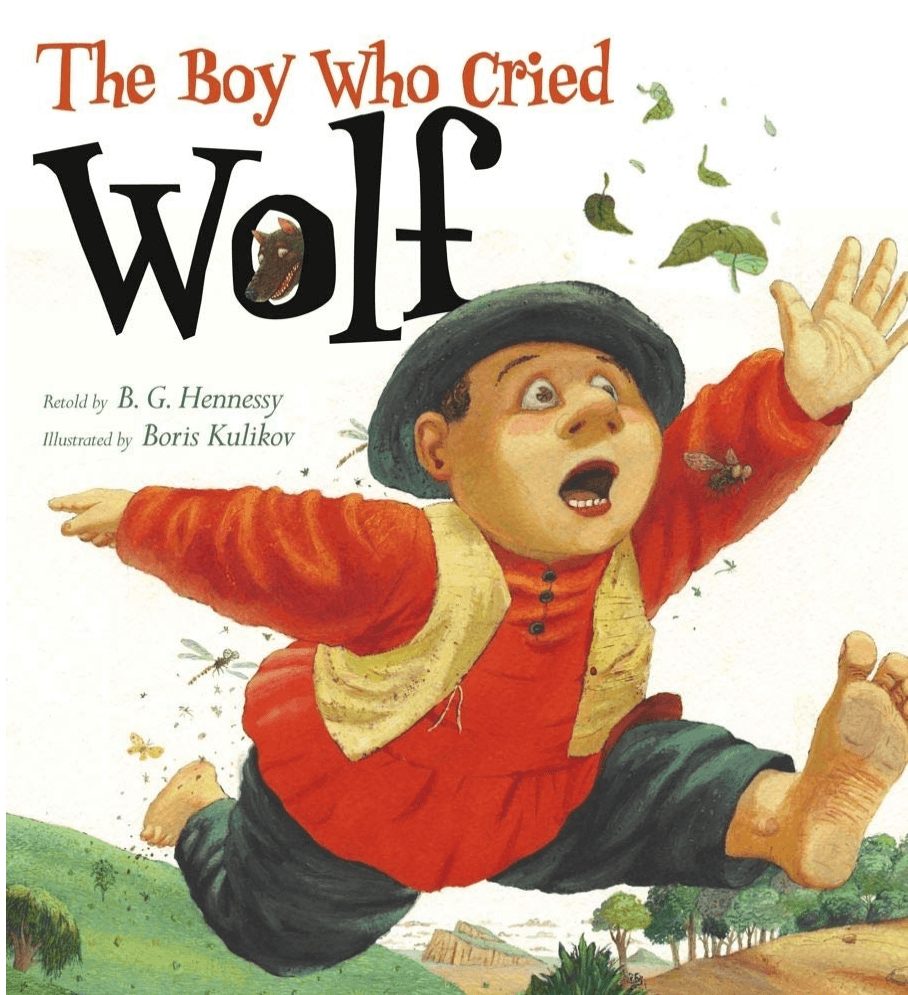
Fable Book Charm: Timeless Lessons through Storytelling
Fable books have captivated audiences for centuries, especially young children. A fable book is a short story featuring animals, plants, or inanimate objects that talk, think, and act like humans. These stories are designed to convey moral lessons or useful truths to the readers.
The story is created to make the moral lessons more straightforward. Many fable books are written as children’s stories, making it easier for children to read and understand the story’s lessons.
The story is appealing due to its simplicity and ability to cross-cultural and temporal boundaries. These stories are not merely entertainment but also a way to reflect on human nature and society’s values. Oh, and if you missed it, I’ve previously written about ‘Stories to Tell in the Dark: Classic Children’s Tales,’ so be sure to check that out as well.
In this article, we will discuss in-depth fables and their origin.
Origin of Fables
Fables are among the oldest forms of storytelling, their roots tracing back thousands of years to ancient civilization. The word “fable” comes from the Latin “fabula” or “story”. One of the most well-known origins of fables is that written by Aesop from Ancient Greece.
Aesop is believed to have lived around the 6th century BCE. He collected stories of animals acting as people and some of his fables originate from India during the first millennium BCE. In India, there is the Panchatantra, which is an Indian collection of fables, dates back to around 200 BCE.
Initially, fables were part of the oral tradition, passed down from one generation to another by word of mouth. In ancient societies, they played a crucial role as educational tools, offering a simple yet powerful way to impart moral teachings and societal values.
Over time, these fables were compiled into notable collections, preserving their stories for future generations. Aesop’s Fables and Jean de La Fontaine’s Fables from 17th-century France are some of the most famous examples.
Characteristics of Fables
Fable books are children’s storybooks that are characterized by four unique features as follows:
1. Anthropomorphization
Anthropomorphization attributes human traits, emotions, and intentions to animals, plants, or inanimate objects. This attribution creates engaging characters who act out human dilemmas and conflicts, making the stories relatable across age groups and cultures.
This allows readers to distance themselves from the characters, allowing them to reflect more objectively on human behavior and societal norms.
2. Lessons
Another key feature of fables is their focus on moral lessons. Unlike other forms of literature, fables are designed to convey ethical teachings straightforwardly. The moral is often stated explicitly at the end of the story.
For example, the moral of “The Boy Who Cried Wolf” directly warns against the consequences of lying. This clarity and directness make fables especially effective in communicating values to young readers, who can grasp complex ideas through simple storytelling.
3. Simple and Clear
Fables are typically short, with concise plots and minimal descriptions. This makes them accessible to a wide audience, especially children, who may find longer narratives difficult to follow. The clarity ensures that the focus remains on the core message, while the simplicity of the language makes the stories easy to understand and remember.
4. Symbolism
Fables are rich in symbolism. Through simple narratives, they often represent complex human behaviors. A smart and sly fox might symbolize deceit, while a slow but steady tortoise represents perseverance.
This symbolic representation allows fables to address complex themes like justice, wisdom, and humility in an approachable way, ensuring their lessons are thought-provoking and enduring.
Cultural Variation of Fables
Fables have universal appeal; however, each culture offers its own unique take, values, traditions, and societal norms. In Western culture, Aesop’s Fables are among the most famous, focusing primarily on human nature and everyday morals.
Aesop’s Fables, such as “The Fox and the Grapes” or “The Ant and the Grasshopper,” often highlight virtues like honesty, hard work, and humility and warn against pride, greed, and deceit. The stories reflect the Western tradition of emphasizing individual ethics and character.
Meanwhile, the Panchatantra from India offers a different cultural perspective. It is deeply rooted in Indian society’s complex social fabric, and the stories often focus on themes like wisdom, strategy, politics, and social behavior.
For example, tales such as “The Lion and the Clever Rabbit” and “The Crows and the Serpent” convey lessons on prudence, diplomacy, and the importance of cunning over brute strength. These fables reflect how navigating social hierarchies and understanding human behavior are important survival skills.
Modern Adaptation and Relevance of Fables
Fables have continually evolved and are now created in various formats, including children’s books, graphic novels, animated stories, and digital storytelling. Digital platforms have also expanded the reach of fables, allowing for interactive storytelling experiences.
Fables remain highly relevant today, particularly in educational settings. Their simplicity makes them powerful tools for teaching ethics, critical thinking, and empathy. In classrooms, fables are often used to initiate discussions on moral dilemmas.
In a world increasingly dominated by digital media and complex social issues, fables offer a timeless method for conveying important messages in a way that is engaging, thought-provoking, and accessible.
The Educational Value of Fables
Fables play a crucial role in early childhood education. They are engaging tools for teaching moral values and supporting emotional development. Through simple but deep narratives, fables introduce young children to concepts of right and wrong.
Fables often feature familiar animal characters in various dilemmas, making abstract ideas easier for children to comprehend. From a psychological perspective, fables significantly impact children’s development. They help develop empathy by allowing children to see the world differently.
Fables also contribute to cognitive development by improving critical thinking and reasoning skills. Children who listen to or read fables learn to predict outcomes, identify cause-and-effect relationships, and analyze characters’ behavior. This helps them improve their problem-solving abilities.
Fables also stimulate the imagination. Using children’s illustrations and fantastical elements encourages creative thinking and helps children expand their understanding of the world. Children learn different scenarios through imaginative narratives, explore potential solutions, and comprehend that actions have consequences.
The Future of Fable Books
Fable books have a lasting impact on literature and continue to shape popular culture. Countless children’s storybooks have been created, which makes fables continue to exist across continents. Readers of all ages still love their simple stories with deep lessons.
Fables have influenced many forms of storytelling, from children’s storybooks to movies and plays, showing that their messages are timeless. In the future, fables may evolve with new technologies.
Digital books, animated videos, and interactive apps could offer fresh ways to share these stories, making them more engaging and accessible to younger audiences. However, as technology changes, it is important to keep the core of these fables intact, which is their ability to teach valuable lessons straightforwardly.
Preserving fables is important for future generations, as they are a source of wisdom that connects us to past cultures and teaches values that are still relevant today.
List of Popular Fable Books
There are hundreds of fable stories around the world. Here are some of the most popular children story books of fables throughout the years that you can still get from offline or online bookstores:
1. The Lion and the Mouse by Jerry Pinkney
The Lion and the Mouse by Jerry Pinkney is a visual adaptation of Aesop’s classic fable. This book features beautiful children’s illustrations that emphasize the themes of kindness and the value of helping others, no matter how small.
In the story, a tiny mouse repays the lion’s act of mercy by saving him from a hunter’s trap. Pinkney’s rich, detailed illustrations bring the story to life, highlighting the message that even the smallest creatures can make a big difference.
2. Fables by Arnold Lobel
Arnold Lobel’s Fables is a collection of modern fables featuring short, impactful stories and charming illustrations. This book presents timeless moral lessons through simple narratives and vibrant artwork. Each fable delivers a clear message about honesty, bravery, and friendship.
3. The Town Mouse and the Country Mouse by Jan Brett
The Town Mouse and the Country Mouse by Jan Brett offers a beautifully illustrated classic fable. The story tells about the lives of two mice from different environments, highlighting the values of feeling content and appreciating one’s lifestyle.
Brett’s detailed and colorful illustrations vividly depict the contrasts between the bustling town and the peaceful countryside, enhancing the moral lesson about finding happiness in one’s own circumstances.
4. The Little Red Fort by Brenda Maier
Brenda Maier’s The Little Red Fort provides a contemporary twist on the fable format. Inspired by The Little Red Hen, this modern adaptation features a young girl who builds a fort with creativity and determination.
The story’s vibrant illustrations and playful narrative emphasize themes of hard work and self-reliance, making it an engaging read for young audiences.
5. Chanticleer and the Fox by Geoffrey Chaucer
The classic fable of Chanticleer and the Fox by Geoffrey Chaucer uses animal characters to convey a cautionary tale. This story illustrates how a clever fox tricks the proud rooster Chanticleer and teaches lessons about pride and deceit.
6. The Boy Who Cried Wolf by B.G. Hennessy

The Boy Who Cried Wolf – Fable Book
B.G. Hennessy’s The Boy Who Cried Wolf is a beautifully illustrated retelling of Aesop’s famous fable. The story follows a young shepherd who repeatedly lies about a wolf attack, only to face real danger when his cries are ignored.
Hennessy’s artwork vividly captures the boy’s regret and the consequences of dishonesty, which helps the story reinforce the moral that lying can lead to serious consequences.
7. Fox and Crow Are Not Friends by Melissa Wiley
Melissa Wiley’s Fox and Crow Are Not Friends offers a fun, updated take on the classic fable. In this modern adaptation, the familiar characters of the fox and the crow find themselves in a humorous, contemporary setting.
The story maintains the traditional moral about deceit and cunning but presents it in a fresh, engaging manner that appeals to today’s young readers.
8. The Ant and the Grasshopper by Rebecca and Ed Emberley
Rebecca and Ed Emberley’s The Ant and the Grasshopper provides a modern retelling of Aesop’s fable with eye-catching visuals. The story contrasts the hardworking ant with the carefree grasshopper, emphasizing the importance of preparation and diligence.
The Emberleys’ illustrations bring a vibrant and dynamic quality to the classic tale, making the moral lesson accessible and enjoyable for young readers.
9. Once a Mouse by Marcia Brown
Marcia Brown’s Once a Mouse is an ancient Indian fable. The story follows a mouse who is transformed into a series of animals and learns valuable lessons along the way. Brown’s beautiful illustrations complement the tale’s themes of humility and the value of inner qualities, offering a timeless story with universal appeal.
10. The Tortoise and the Hare by Janet Stevens
Janet Stevens’ The Tortoise and the Hare is a vibrant retelling of Aesop’s classic fable that teaches the value of persistence and patience. The story depicts a slow and steady tortoise who wins a race against a boastful hare, emphasizing that perseverance often triumphs over speed and arrogance.
Fables are the foundation of children’s storybooks, and they have held important significance throughout generations. Their timeless lessons on morality, empathy, and human nature continue to resonate, shaping how young readers understand themselves and the world around them.
Today, despite the new technologies and storytelling formats, the essence of fables remains a vital part of children’s literature. It ensures that the rich narratives of wisdom and insight are preserved and adapted for future generations.
By integrating fables into modern media and educational practices, we can continue to inspire and educate, reinforcing the value of these beautiful stories in children’s storybooks.


Pingback: Stories to Tell in the Dark: Classic Children's Tales - Mehibi Studio